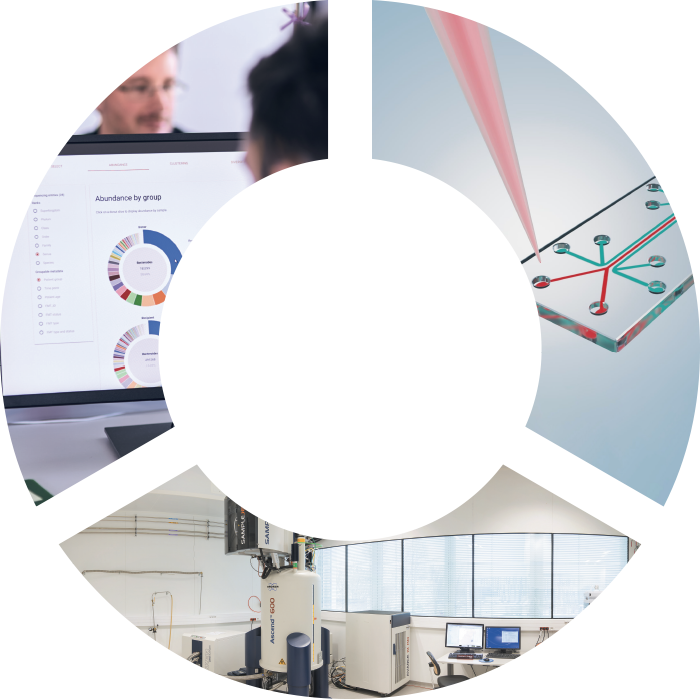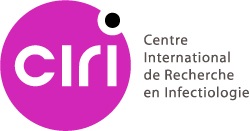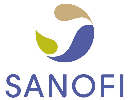Although vaccines have drastically reduced the mortality and morbidity of numerous diseases, they have mostly been developed in an empirical fashion. Therefore, significant challenges remain in the development of new vaccines, as confirmed during the recent SARS-COV-2 pandemic.
During the last two decades, advances in technology have given researchers the ability to implement rational vaccine design programs that allow you to accelerate and mitigate the risk associated with your vaccine development programs.
Our expertise in vaccines is oriented toward the application of novel technologies to foster vaccine development and monitor the host response to vaccines using in vivo Omic approaches and state-of-the-art, dynamic in vitro models, and in silico Artificial Intelligence and predictive algorithms.
We are committed to help you accelerate the development process in the following ways:

Characterizing the host response in humans and animals
To facilitate patient stratification, we generate and integrate data from a number of sources, such as immunological, multi-Omic, and clinical studies. To further expand our relevant knowledge of a system, we acquire data not only at the group and individual levels, but also at the cellular level. Furthermore, we do this longitudinally, which provides information regarding the changes in individual parameters with time.
To achieve this, we use immune monitoring, gene and protein expression analysis, and metabolite assays in appropriate tissues; thus, we use both local and systemic approaches. The use of a range of Omic technologies and analysis are used to predict vaccine efficacy and reactogenicity, as well as to better characterize the vaccine’s mechanism of action.
In parallel, to overcome the problem of small sample volumes (several assays needing to be performed using a single blood sample or small volumes being obtained from older patients, infants, or immunocompromised patients), we have developed dedicated sample preparation methods for each technique.
Decision-making regarding novel vaccine targets
Additional evidence is required for some infectious diseases and others that are suspected to be caused by pathogens to identify or confirm the identity of the causative infectious agent. We can gather the necessary additional biological information to help you rationalize your vaccine strategy when information is missing in the literature or is inconsistent. More specifically, we use multi-tier technologies, such as metagenomics, to explore the roles of specific pathogens or commensals in target tissues, according to the disease of interest.
Personalized medicine and patient stratification
Personalized medicine and patient stratification is another focus. During the evolution of healthcare, it has become clear that not only the pathogen, but also the host, is an important factor in the efficacy of a given intervention. This is now leading researchers to focus on specific populations for which current vaccines do not provide sufficient protection, especially over the long term, such as for the influenza vaccine in older patients.
For this reason, in silico predictions can be developed to help the design of vaccine formulation addressing specific fragile populations.
Moreover, we are developing state-of-the-art, novel microfluidic-based techniques to simultaneously measure several parameters at the single-cell level and in vitro models based on organ-on-chip technology to study the initial response to a vaccine, which is key to understanding the ultimate immune status of the recipient.
These systems, which represent an additional preclinical decision-making tool, facilitate the evaluation of novel vaccine solutions in development by partners before they are subjected to human trials.
Characterizing the host response in humans and animals
To facilitate patient stratification, we generate and integrate data from a number of sources, such as immunological, multi-Omic, and clinical studies. To further expand our relevant knowledge of a system, we acquire data not only at the group and individual levels, but also at the cellular level. Furthermore, we do this longitudinally, which provides information regarding the changes in individual parameters with time.
To achieve this, we use immune monitoring, gene and protein expression analysis, and metabolite assays in appropriate tissues; thus, we use both local and systemic approaches. A wide range of Omic technologies and Artificial Intelligence algorythms are used to predict vaccine efficacy and reactogenicity, as well as to better characterize the vaccine’s mechanism of action.
In parallel, to overcome the problem of small sample volumes (several assays needing to be performed using a single blood sample or small volumes being obtained from older patients, infants, or immunocompromised patients), we have developed dedicated sample preparation methods for each technique.
Improving vaccine production
We perform longitudinal monitoring of gene expression, protein levels, and metabolite production during the manufacturing process for specific vaccine antigen(s). In order to improve vaccine production (optimize yields), it is necessary to identify the impediments to efficient antigen production. These data can then be fed into in silico analysis models (Numerical twins, for example) that identify the optimal culture conditions for antigen production.
This approach can be used to improve culture media through in-line analysis and automated supplementation, and to support decision-making regarding the cessation or continuation of the production of a given batch.
In silico prediction of immunogenicity and reactogenicity
BIOASTER has available a team of Artificial Intelligence and Machine Learning experts that can design ad-hoc algorithms as well as using state of the art technologies to support the identification of the best antigen to develop, as well as the formulation, to obtain the best ratio between cellular and humoral response and development of reactogenicity effects. Continuous communication with BIOASTER’s experts will ensure the identification or production of the ideal dataset to address customer’s needs.
References









